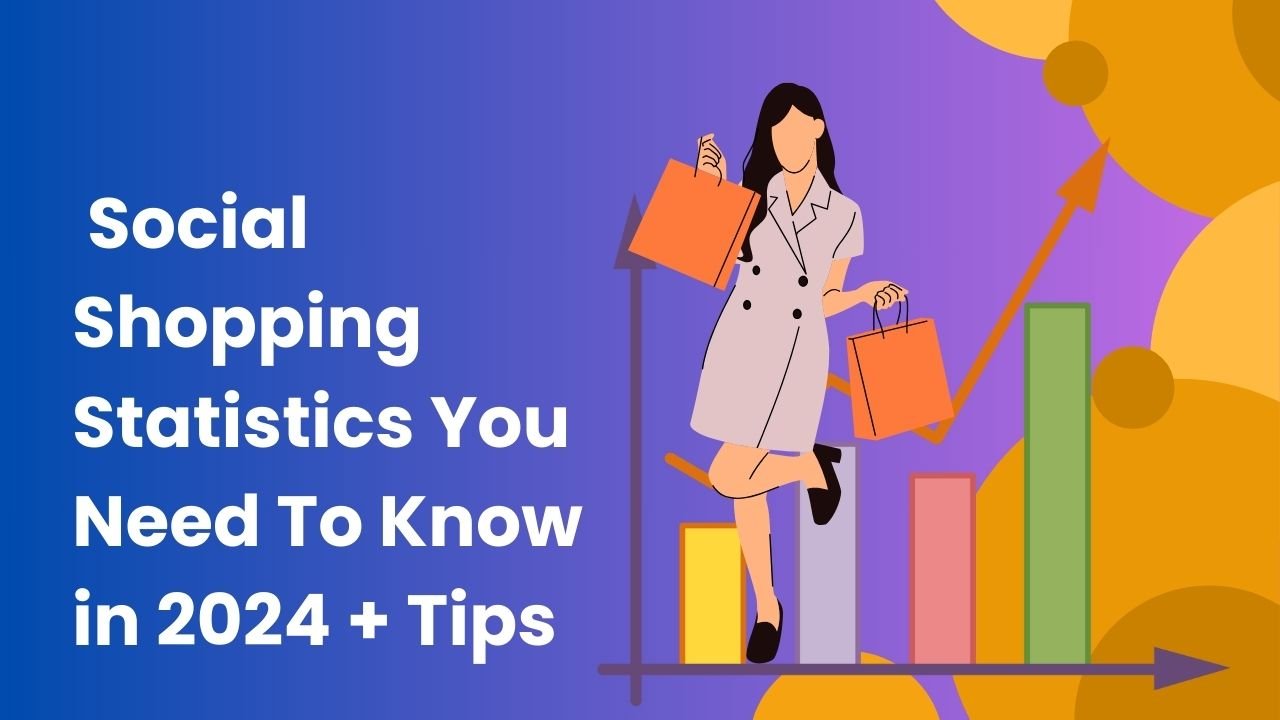Social Shopping Statistics You Need to Know in 2024 + Tips
Introduction
Social shopping is changing our lives, changing the way customers explore and purchase products. Brands are now engaging with audiences in creative ways while doing seamless purchases, it has become possible with the introduction of social media channels growing in virtual marketplaces.
Understanding the trends and stats of social shopping is mandatory for businesses aiming to stay competitive. This blog reveals the latest numbers, actionable tips and tricks to help you harness the power of social shopping.
What is Social Shopping?
Social shopping combines the elements of social media with interaction e-commerce payments. Now customers can rely on social shop reviews on various channels like Facebook, Instagram, and TikTok to shop. Instead of merely browsing products on e-commerce platforms,.The shopping on social media allows users to explore, review, and purchase without ever leaving their feeds.
Social Shopping in 2024: The Growth Story
Key Market Statistics
- Global Market Growth
The Social Commerce Statistics market is estimated to hit $2 trillion by 2024, it shows that it will be a drastic rise as a dominant force in retail.
- Consumer Adoption
Surveys indicate that 70% of Millennials and Gen Z consumers prefer shopping through social platforms for convenience and personalized experiences. - Mobile Dominance
With over 80% of transactions conducted on mobile devices, the role of smartphones in social shopping is pivotal.
Top Social Shopping Platforms
With features like Marketplace and Shops, Facebook remains a powerhouse for social commerce. It offers tools to build virtual storefronts and reach an extensive audience.
Instagram’s visually driven platform is ideal for showcasing products. Features like Instagram Shopping, Reels, and Stories make purchasing as simple as a click.
TikTok
TikTok’s algorithm-driven content offers a unique edge. Viral trends combined with shoppable videos create instant purchase opportunities, particularly for Gen Z audiences.
Trends Defining Social Shopping
AI-Powered Recommendations
AI tools analyze browsing habits and preferences to offer tailored product suggestions. This personalization drives higher conversions.
Livestream Shopping
Under Live shopping events, users can realize in store experience. There has various options, like viewers can interact with hosts, ask questions and real-time purchase, create engaging and driven environments.
Augmented Reality (AR) Experiences
Augmented Reality experiences allows shoppers to virtually try on furniture, clothes and even makeup in their spaces. Helps to reduce any doubts and increase user confidence in their purchases.
Tips to Leverage Social Shopping
- Choose the Right Platform
Understand where your audience spends most of their time. For younger audiences, TikTok and Instagram reign supreme. For broader demographics, Facebook is the go-to. - Collaborate with Influencers
Influencers amplify your reach. Partner with creators who align with your brand ethos to drive authentic engagement and sales. - Use Shoppable Content
Include direct links, tags, and calls-to-action (CTAs) in your posts to streamline the purchase journey. The fewer clicks it takes to buy, the better. - Embrace Analytics
Track metrics like click-through rates (CTR), conversions, and engagement. Use insights to refine your campaigns for better results.
Challenges in Social Shopping
- Data Privacy Concerns
Consumers are increasingly wary of how their data is used. Ensure your practices align with privacy laws and clearly communicate your data handling policies. - Adapting to Algorithm Changes
Social media algorithms constantly evolve. Stay updated and focus on quality content to maintain visibility. - Managing Logistics
Timely delivery and responsive customer service are non-negotiable in social shopping. Efficient processes build trust and encourage repeat purchases.
Future of Social Shopping
Social commerce is continuing to grow, with drastic change in technologies like online shopping assistant and Artificial Intelligence chatbots are taking the main role. Keep updated and adaptable will ensure businesses remain at the front of this exciting Revolution.
FAQs
What is the difference between social commerce and e-commerce?
Social commerce takes place within social media platforms, this is allowing users to identify, engage, and buy anything without leaving the app. E-commerce, happens on websites and marketplace
How can social shopping be beneficial for small businesses?
Social shopping like low-cost advertising, collaborations with influencers and shoppable posts, small business can effectively work with big brands on social channels.
Which platform is best for social shopping in 2024?
All platforms Instagram, Facebook, and TikTok are the lead pack, but when it comes to best platform it depends on your target audience and business type.
What role does Augmented Reality play in social shopping?
Augmented Reality improves the shopping experience by providing users to visualize products in real-time, reducing uncertainty and enhancing confidence in their purchases.How can businesses ensure privacy in social commerce?
Use transparent data policies, comply with regulations like GDPR, and provide clear options for users to control their data preferences.Social Shopping Statistics You Need to Know in 2024 + Tips






